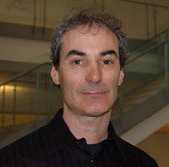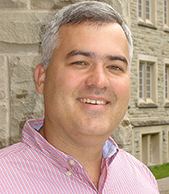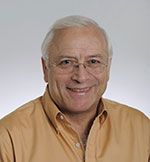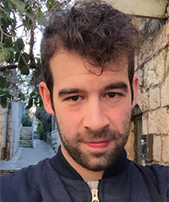INVITED SPEAKERS
Biography of Nantel Bergeron

Nantel Bergeron is a full professor of pure mathematics at York University who specializes in algebraic combinatorics. He received his BSc and MSc in pure mathematics from Université du Québec à Montréal (UQAM). He completed his PhD in 1990 at the University of California at San Diego under Adriano Garsia and was a postdoctoral fellow at Princeton. Before being hired by York University in 1994, he held a Benjamin Pierce Assistant Professorship at Harvard.
Abstract of presentation: Représentation et super-représentation de groupes
L’étude des symétries d’espaces est intimement reliée aux représentations des groupes. Les représentations de la famille des groupes symétriques (permutations de {1,2,…,n}) sont particulièrement intéressantes à étudier car elles ont plusieurs propriétés algébriques et combinatoires fascinantes.
Pour étudier d’autres familles de groupes, je vais introduire la notion de super-représentation tel que définie par André, Yan, Diaconis, Isaacs et autres. Ces notions sont toujours en développement et je m’intéresse particulièrement aux super-représentations intégrales. Je ferai un survol de ces notions et je donnerai quelques problèmes intéressants à étudier.
http://garsia.math.yorku.ca/NantelTalk/Biography of Matt Davison

Matt Davison is a full professor of applied mathematics, statistical and actuarial sciences, and business at the University of Western Ontario, where he holds the Canada Research Chair in Quantitative Finance. He received a BASc specialized in Engineering Geophysics from the University of Toronto and a PhD in applied mathematics from the University of Western Ontario. Before returning to Western, he acted as a front office trading floor quantitative analyst at Deutsche Bank and was a postdoctoral fellow in theoretical physiology at the University of Bern.
Abstract of presentation: Quantitative Finance at the service of Operations Research in Engineering
Quantitative Finance is said by some to date back to Bachelier's work in the early 1900s. This work, while far ahead of its time, was nearly entirely forgotten until rediscovered in the 1960s.
Another start point for quantitative finance might be said to be Markowitz's seminal work on portfolio theory. This work combined the development of a (simple) stochastic model for the variation of a stock price with the optimization of a strategy with a given financial goal. The optimization technique Markowitz used was quadratic programming, which he borrowed from the operations research literature of the time. It is also known that the original Black Scholes PDE was solved with the help of a chemical engineering professor.
Since then Quantitative Finance has grown by leaps and bounds. It is now in the happy position of being able to "give back" to the Operations Research field. I am going to describe some of the work I have done with my students on applying the Quantitative Finance theory of Real Options to the management of real engineering plants in an Operations Research Paradigm.
In the spirit of repaying debts, I will talk about how Real Options can be used to model industrial management problems arising in Chemical Engineering -- in particular as relates to the operation of corn ethanol plants and the planning of water purification plants.
Biography of Stephen Fienberg

Stephen Fienberg is the Maurice Falk Professor of Statistics and Social Science at Carnegie Mellon University in Pittsburg. He received his BSc from the University of Toronto and his PhD in statistics from Harvard University. He is co-Founder and editor of the Journal of Privacy and Confidentiality, and editor of the Annals of Applied Statistics.
Abstract of presentation: On the Causes of Effects
In medical settings, in the courtroom, and even in everyday life, when we encounter an observed outcome, we ponder what was its cause. "What caused the bladder cancer in a patient aged 70? Was it his smoking as a teenager? Or was the cause environmental? Or perhaps in part genetic?" While much of science is concerned with the effects of causes, relying upon evidence accumulated from randomized controlled experiments and observational studies, the problem of inferring the causes of effects requires its own framing and possibly data. Philosophers have written about the need to distinguish between "the effects of causes" and "the causes of effects" for hundreds of years, but their advice remain murky even today. The statistical literature is only of limited help here as well, focusing largely on the tradition problem of the "effects of causes." Through a series of examples, I will review the two concepts, how they are related, and how they differ. I will discuss the challenges for statisticians, scientists, and policy makers who should be worried about both problems.
Biography of Guillaume Roy-Fortin
 Guillaume Roy-Fortin completed a BSc in psychology at Université de Sherbrooke in 2004 and a second BSc in mathematics at the Université de Montréal in 2010. He will soon defend his Ph.D. thesis, written under the supervision of Iosif Polterovich. In September 2015, Guillaume will join the mathematics faculty at Northwestern University as a Ralph Boas Assistant Professor.
Guillaume Roy-Fortin completed a BSc in psychology at Université de Sherbrooke in 2004 and a second BSc in mathematics at the Université de Montréal in 2010. He will soon defend his Ph.D. thesis, written under the supervision of Iosif Polterovich. In September 2015, Guillaume will join the mathematics faculty at Northwestern University as a Ralph Boas Assistant Professor.
Abstract of presentation: Ensemble nodal et croissance de fonctions propres du Laplacien
Les fonctions propres du Laplacien interviennent dans la modélisation d'une panoplie de phénomènes physiques, comme par exemple la vibration d'une membrane ou la diffusion de la chaleur sur une plaque. On appelle ensemble nodal l'ensemble des zéros de telles fonctions propres. Cet ensemble a pour la première fois été observé par Chladni, qui faisait vibrer des plaques de différentes formes sur lesquelles il avait préalablement saupoudré du sable. Lorsque la plaque vibre à une fréquence pure, le sable s'accumule et forme un motif précis: l'ensemble nodal. En mécanique quantique, où les fonctions propres normalisées sont interprétées comme les fonctions d'onde d'une particule libre, l'ensemble nodal peut être vu comme le lieu où la particule a le « moins » de chance de se retrouver. Pour apprivoiser cet ensemble nodal, on s'inspire des polynômes: le degré d'un polynôme contrôle le nombre de ses zéros mais aussi sa croissance. On montrera qu'un tel lien existe aussi pour les fonctions propres.
